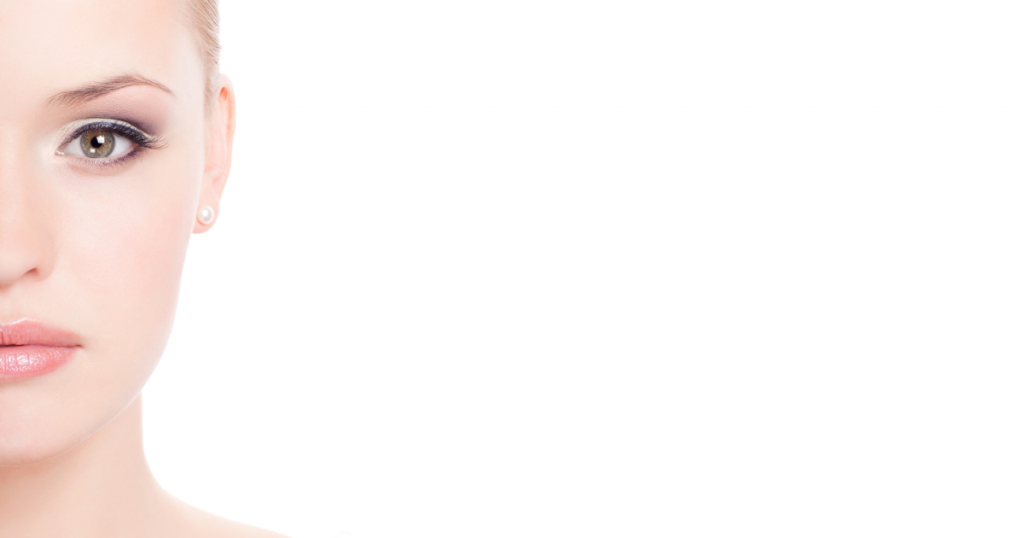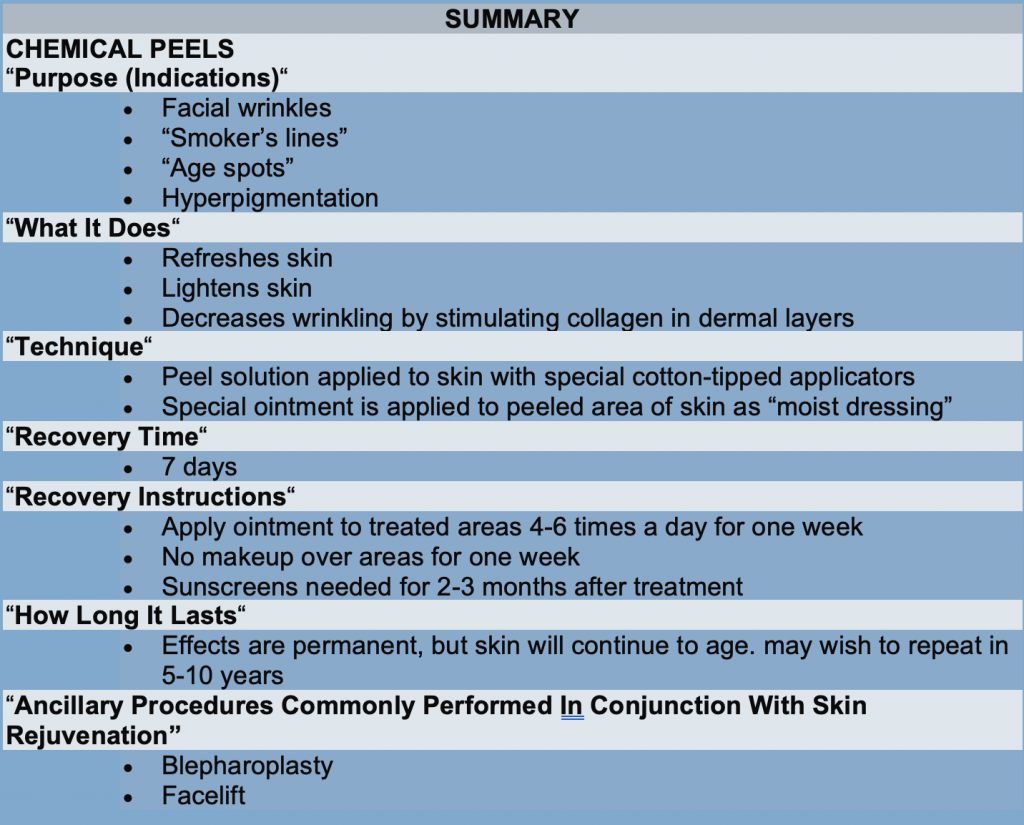
Skin rejuvenation can be divided into different categories-light, medium, and deep treatments. Light treatments involved lotions and cream. These are frequently applied on a daily basis and have the advantage of no “down time” for convalescence. One can apply these lotions and continue her normal daily and social actives without any interruption. The objective of this “first level” of skin rejuvenation is to provide a more “refreshed” appearance to the skin and also, over time, remove some of the more superficial skin contour and aging changes such as minor pigmentation, scaling, and very fine wrinkling.
One is able to accelerate or “jump start” the results of their skin rejuvenation program by using serial skin rejuvenation chemical peels. This involves performing light TCA peels to the face every one to two weeks. We find that six to eight “serial peels” performed at one to two week intervals results in affects similar to those obtained by using Retin-A for a year. In our experience , approximately 50% of individuals are able to obtain affects similar to those of a light medium depth chemical peel, but without the 7-10 day “down time”. These peels help to remove some of the pigmentation changes that medically we call mild “dischromia”. It can also be very effective in cases of more severe acne. While no two individuals heal or respond the same and while individual results may very, most patients find that they can accelerate their skin rejuvenation significantly with serial TCA peels.
As part of an overall skin rejuvenation program we frequently perform a light TCA peel at three to four month intervals to essentially act as a very deep “facial” and to further accentuate the results of the application of the daily rejuvenation lotions and creams that we have prescribed.
Medium peels are use to remove mild to moderate skin textural and pigmentation changes. They may also be helpful in reducing minor acne scars and to stimulate increased collagen formation in the upper dermal layers. The advantage of medium depth chemical peels is that they have minimal chance of changing our overall skin pigmentation.
Medium depth chemical peels usually require mild sedation and are performed on outpatient basis. Patients are able to return home immediately following the procedure and experience very little if any discomfort. However one needs to refrain from wearing makeup for one week and daily apply a moist dressing (Vaseline) to the peeled areas for one week. At the end of the week the skin has rejuvenated and usually has a pleasing red glow. Most individuals are able to apply make up and resume a normal work and social schedule at that time. Medium peels are use to treat degenerative skin, mild acne, and moderate aging and environmental changes to the skin. The results last two to five years for most individuals.
Deep treatments involved the use of carbon dioxide laser’s and phenol based chemoexfoliation. These procedures provide optimal skin rejuvenation possible. They remove the top layer of the skin and stimulate increased collagen formation in the deeper layers of the skin over the following nine to 12 months. Frequently patients see not only a refreshening of the skin by regeneration of a new “top layer” of the skin, but also find approximately a 20% tightening effect to the skin over 9 to 12 months. Again, results will vary from individual to individual and no one can guaranty results. However most patients find that carbon dioxide laser or deep phenol chemical peels provide dramatic results in illuminating facial wrinkling, pigmentation changes, and improving skin elasticity. However, these treatments can be associated with some pigmentation changes. Phenol based chemical peels are used to “lighten” areas of increased pigmentation such as and patients with melasma ( the so called “mask of pregnancy”). Patients who undergo a phenol based chemical peel need to accept the fact that their skin may become lightened to the extent that they need to use make up and cover treated areas. Despite this the phenol peel is very popular because it provides most dramatic reduction in facial wrinkling and the most improvement in skin elasticity of any of the facial rejuvenation procedures.
Carbon dioxide laser surface as well as phenol chemical peels require minor sedation. Procedures are done on an outpatient basis, and patients are able to return home immediately following the procedure. Similar to the medium peel, there is very little if any discomfort associated with either of these procedures. As with the medium chemical peel, a moist dressing technique is used following treatment. Vaseline is applied to all treated areas four to six times a day for seven days. While these procedures can be repeated, we find that most individuals respond very favorably to a single carbon dioxide laser resurfacing or phenol based chemical peel treatment. These procedures are indicated for severe acne scarring, patients with recurrent skin cancers, deep facial wrinkling such as “smokers lines” and more advanced pigmentation and skin textural changes.

Schedule a Consultation
Communication is not secure. Contacting the practice does not establish a physician/ patient relationship.*